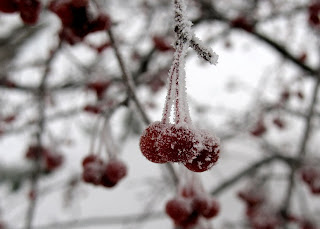
hui-neng tearing up the sutras
one of the more intriguing schisms in religion, specifically buddhism, and more specifically ch'an buddhism is its split into the so-called northern and southern schools that happened in 7th century china. incidentally, the first syllable of ch'an is sounded like a 'j' i.e. jaan which traces its root to sanskrit dhyana and becomes the japanese zen.. interestingly chi in tai'chi is also pronounced the same way (like jee as opposed to chi as in cheese which is written in pinyin representation as qi as in qi-gong).
the teachings of the sixth patriarch hui-neng came to be associated with the so called southern school. hui-neng's story is itself an amazing one. born into a poor family, he is supposed to have attained an awakening while listening to someone recite the diamond sutra. he then sought a zenmaster to clarify his experience who happened to be the fifth patriarch hongren who promptly asked him to do chores like pounding rice. months later, when the fifth patriarch was ready to pass on his robe, he wanted a stanza written that would demonstrate the clear mind and understanding of the writer and the inheritor of the dharma seal and patriarchate. shen-xiu, the head monk was the obvious choice and wrote his stanza on the wall-
The body is a Bodhi tree,
the mind a standing mirror bright.
At all times polish it diligently,
and let no dust alight.
huineng, who was illiterate, heard it and finding it lacking in understanding, asked someone to write for him on the wall
Bodhi is no tree,
nor is the mind a standing mirror bright.
Since all is originally empty,
where does the dust alight?
the rest is history and the split is usually traced to hui-neng's successor accusing shen-xiu and his disciples of lacking in understanding, calling them the northern school. a lot of scholars dismiss the story as apocryphal but it cannot be denied that the branching happened somewhere down the line.
what got me thinking about it this morning was the idea of spontaneity in haiku. haiku can be defined, albeit a bit self-referentially, as a verse describing a zen moment, the paradox arising from the impossibility of defining the zen moment. of course, one could say zen moment is itself tautological. writing haiku (or even "lowku" as i sometimes call bad haiku), however, requires considerable skill especially in the original japanese with its tight syllabic constraints, cutting words and seasonal allusions. so how could it be spontaneous? it seems very analogous to the "sudden" enlightenment described throughout zen literature- of men and women getting enlightened while performing quotidian tasks- the tock of a stone while raking, or water falling from the bottom of a bamboo pail or watching foam in a waterfall. it seems that they have all had some preparation and the event was just a catalyst. otherwise it would mean chemical reactions taking place with just a catalyst and without the relevant combining molecules. a more mundane example is solving cryptic crosswords, where after a lot of experience, one can simply write down the answer for some clues, seemingly without any processing even though it has obviously been processed. zen is often portrayed as anti-intellectual and reading is forbidden in retreats but it seems that there is a place for words and reading and sutras and tearing up of the sutras by a lot of zen masters is contradictory and confusing, only at first but is actually not so.
































